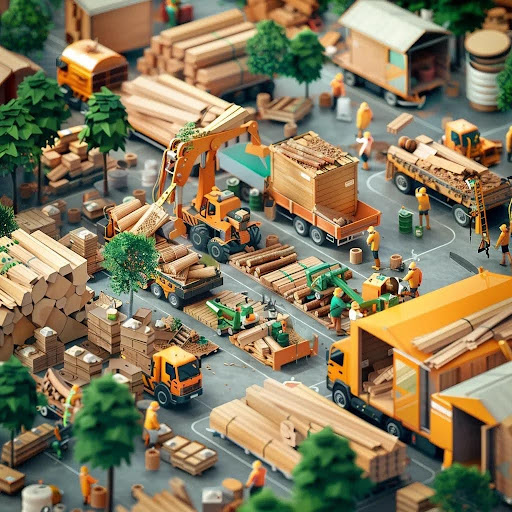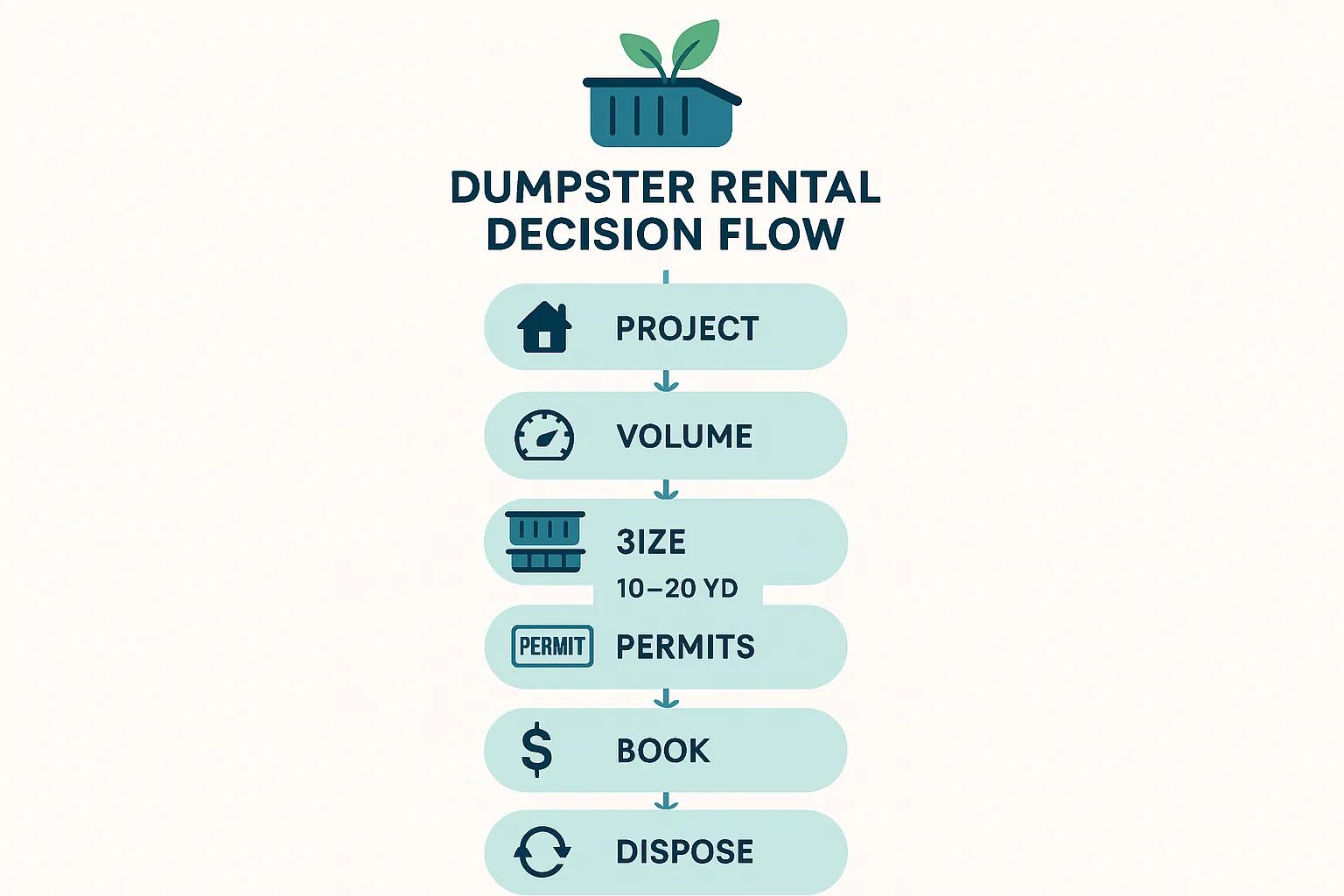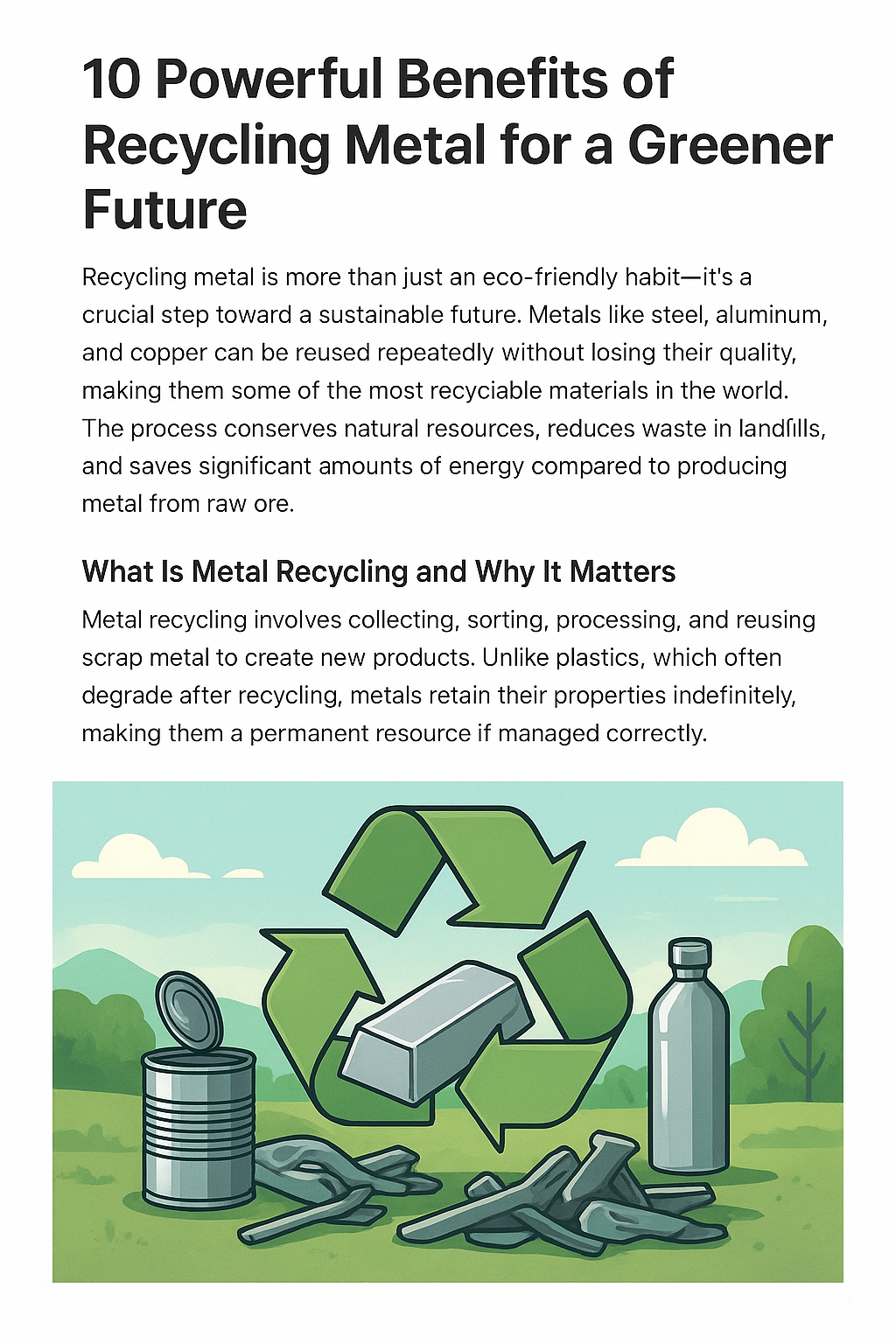
Wood recycling transforms discarded timber into new materials, drastically reducing greenhouse gas emissions and conserving forests while cutting waste management costs for multi-location businesses. This article examines six core themes:
wood recycling for the construction industry
- Key environmental benefits of wood recycling
- Environmental impacts of traditional wood disposal
- Commercial advantages for businesses
- Best practices in commercial wood recycling
- Environmental challenges addressed by recycling
- Industry trends and case studies demonstrating real-world impact
By exploring these topics, facility managers, procurement professionals, and sustainability officers will understand how National Waste Associates (NWA) integrates sustainable wood recycling services into comprehensive waste management solutions, driving both ecological gains and operational savings.
What Are the Key Environmental Benefits of Wood Recycling?
Wood recycling repurposes discarded lumber, pallets, and construction debris into valuable products, reducing energy-intensive timber harvesting, diverting organic waste from landfills, and lowering carbon emissions. This process unlocks multiple environmental gains through efficient material recovery and sustainable practices.
How Does Wood Recycling Reduce Greenhouse Gas Emissions?
Wood recycling reduces greenhouse gas emissions by diverting organic material from anaerobic landfill decomposition, which produces potent methane, and by offsetting the energy demands of virgin timber processing.
- Diverted biomass prevents methane generation at an average rate of approximately 0.05 metric tons of CH₄ per ton of wood.
- Recycling replaces energy-intensive sawmilling, saving up to 10 GJ of energy per ton of recycled wood.
- Carbon remains sequestered in recycled products—particleboard, mulch, and biomass fuel—rather than returning to the atmosphere.
By capturing both methane avoidance and energy savings, wood recycling achieves a net reduction of up to 0.9 metric tons of CO₂-equivalent per ton of material, reinforcing its climate-smart credentials and paving the way for broader industrial adoption.
Wood Recycling and Greenhouse Gas Emissions
Wood recycling significantly reduces greenhouse gas emissions by diverting organic material from landfills, where it would decompose anaerobically and produce methane. Recycling also offsets the energy demands of processing virgin timber, leading to a net reduction in CO₂-equivalent emissions. Our wood recycling
United States Environmental Protection Agency, “Solid Waste Management and Greenhouse Gases” (2016)
This research supports the article’s claims about the environmental benefits of wood recycling in reducing greenhouse gas emissions.
In What Ways Does Wood Recycling Conserve Natural Resources and Forests?
Wood recycling conserves forests by reducing demand for virgin timber, safeguarding biodiversity, and minimizing habitat loss .
- Recycled wood substitutes for 30–50% of fresh lumber in manufacturing composite boards.
- Lower harvest rates preserve critical ecosystems, supporting wildlife and watershed health.
- Reduced logging pressure decreases soil erosion and protects carbon-rich old-growth stands.
Sustaining forest integrity through recycling not only safeguards natural capital but also supports restoration initiatives , linking material recovery to long-term ecosystem resilience and regulatory compliance goals.
Forest Conservation Through Recycling
Recycling wood conserves forests by decreasing the demand for virgin timber, which protects biodiversity and minimizes habitat loss. Using recycled wood in manufacturing composite boards and other products reduces the pressure on forests, supporting ecosystem health and long-term resilience .
Food and Agriculture Organization of the United Nations, “State of the World’s Forests” (2022)
This citation reinforces the article’s discussion on wood recycling contributes to forest conservation and the preservation of natural resources.
How Does Wood Recycling Decrease Landfill Waste and Pollution?
Recycling wood diverts substantial volumes of bulky organic waste, extending landfill lifespans and improving local air and water quality.
| Material Diverted | Landfill Space Saved | Pollution Reduction Mechanism |
|---|---|---|
| 1 ton of wood | 3 cubic yards | Prevents leachate-borne toxins and methane leaks |
| 5,000 tons/year | 15,000 cubic yards | Reduces particulate emissions from burning waste |
By keeping wood out of landfills, businesses and communities experience fewer odor issues, decreased groundwater contamination risks, and lower monitoring costs—delivering measurable environmental relief and regulatory adherence .
How Does Traditional Wood Disposal Impact the Environment?
Conventional disposal of wood waste—burial or open burning—exacts high environmental costs by generating greenhouse gases, accelerating deforestation, and releasing pollutants that compromise soil, air, and water quality. Wood recycling for the construction industry .
What Are the Environmental Consequences of Wood Waste in Landfills?
When wood waste is landfilled, anaerobic decomposition emits methane at a global warming potential 28× that of CO₂, releasing approximately 0.05 metric tons of methane per ton of wood over its breakdown cycle. This contributes significantly to landfill greenhouse gas inventories and undermines climate mitigation efforts .
Buried wood also occupies valuable landfill capacity, hastening the need for new disposal sites and increasing land-use pressures on undeveloped areas. Wood recycling for the construction industry .
How Does Traditional Disposal Contribute to Resource Depletion and Deforestation?
Relying on virgin timber to replace disposed wood drives continuous logging cycles that erode forest cover by an estimated 10–15 million hectares annually. Ongoing demand for fresh lumber :
- Increases monoculture plantations, reducing ecosystem diversity
- Strains water resources through intensive irrigation and pulp processing
- Exacerbates habitat fragmentation and species loss
Conservation of wood resources through recycling alleviates these pressures, enabling a more sustainable forest economy.
What Pollution Risks Are Associated with Landfilling Wood Waste?
Landfilled wood can release leachate containing heavy metals from treated lumber, volatile organic compounds (VOCs), and polycyclic aromatic hydrocarbons (PAHs) that seep into groundwater. Open burning of wood waste emits particulate matter (PM₂.₅), carbon monoxide, and dioxins, impairing air quality and public health in nearby communities.
Transitioning to controlled recycling processes mitigates these pollution pathways and aligns with stringent environmental regulations .
What Are the Commercial Benefits of Wood Recycling for Businesses?
Integrating wood recycling into corporate waste streams delivers tangible cost savings, revenue opportunities, enhanced brand reputation, and circular economy contributions that differentiate businesses in competitive markets.
Integrating wood recycling into corporate waste streams offers tangible cost savings, revenue opportunities, and enhanced brand reputation . Businesses can reduce disposal expenses, generate revenue from recycled wood products, and improve their sustainability profiles, attracting environmentally conscious clients and stakeholders.
Commercial Benefits of Wood Recycling
Ellen MacArthur Foundation, “The Circular Economy in Detail” (2015)
This source supports the article’s claims about the commercial advantages of wood recycling for businesses, including cost savings and revenue generation .
How Can Wood Recycling Reduce Waste Management Costs?
Wood recycling cuts disposal expenses by up to 50% compared with landfill fees. A typical cost comparison illustrates: Wood recycling for the construction .
| Service | Disposal Cost per Ton | Recycling Cost per Ton | Net Savings per Ton |
|---|---|---|---|
| Landfill | $60 | – | – |
| Recycling | – | $30 | $30 |
By partnering with a full-service provider like NWA, multi-site enterprises realize predictable waste budgets and lower hauling fees, freeing capital for operational investments .
What Revenue Opportunities Does Wood Recycling Create?
Recycled wood streams yield products—mulch, wood chips, engineered board—that can be sold to landscaping, manufacturing, and biomass energy markets .
- Mulch sales generate $10–$15 per cubic yard.
- Wood chip contracts for biofuel can exceed $25 per ton.
- Composite board production can capture $0.10 per board foot.
Leveraging these markets transforms waste liabilities into revenue channels, enhancing return on waste management investments.
How Does Wood Recycling Enhance Corporate Sustainability and Brand Image?
Demonstrating responsible wood waste stewardship earns recognition in sustainability reports, boosts ESG ratings , and attracts environmentally conscious clients. Visible recycling programs:
- Fulfill corporate social responsibility (CSR) pledges
- Strengthen community and client trust through transparent reporting
- Position companies as industry leaders in waste reduction
Embracing wood recycling aligns business practice with stakeholder expectations and emerging regulatory frameworks. Wood recycling for the construction industry .
How Does Wood Recycling Support a Circular Economy for Businesses?
Wood recycling fosters a closed-loop model by converting waste into raw materials for new products: Wood recycling
- Salvaged lumber becomes mulch and animal bedding.
- Wood chips fuel biomass boilers for on-site energy.
- Sawdust and small offcuts feed pellet manufacturing.
This circular approach retains material value, cuts raw material procurement, and underscores a company’s commitment to resource efficiency .
What Are the Best Practices in Commercial Wood Recycling Services?
Efficient commercial wood recycling hinges on tailored collection systems, advanced processing technologies, and rigorous compliance protocols that ensure maximum material recovery and regulatory alignment.
How Is Wood Waste Collected and Segregated Efficiently?
Efficient collection begins with on-site segregation :
- Dedicated bins for untreated lumber, painted wood, and pallets
- Regular pick-up schedules synchronized with production cycles
- Clear labeling and staff training to minimize cross-contamination
National Waste Associates implements GPS-tracked vehicles and real-time load tracking to optimize routes, reducing fuel consumption and carbon footprint while maintaining high service reliability .
What Are the Key Steps in Processing and Repurposing Wood Waste?
Processing transforms mixed wood into uniform feedstocks :
- Sorting: Mechanical and manual separation of treated versus untreated wood.
- Shredding and Screening: Size reduction for consistent mulch and chip grades.
- Debris Removal: Magnetic and air-separation to extract metals and contaminants.
- Balancing Moisture: Drying systems prepare biomass for combustion or pelletizing.
This multi-stage workflow yields high-quality outputs tailored to end-user specifications in landscaping , energy, and manufacturing.
How Do Businesses Ensure Compliance and Reporting in Wood Recycling?
Regulatory compliance involves:
- Maintaining chain-of-custody records for each wood batch
- Generating diversion and tonnage reports for environmental audits
- Adhering to local waste handling permits and air emission controls
NWA’s digital portal provides clients with instantly accessible dashboards that document recycling performance, support sustainability reporting, and verify compliance with federal and state mandates, reinforcing audit readiness .
What Are the Environmental Challenges Addressed by Wood Recycling?
As a strategic intervention, wood recycling confronts critical environmental challenges—methane emissions, pollution leaching, and carbon release—through proactive material management and value-retention practices.
Why Is Methane from Landfills a Critical Concern?
Methane’s global warming potential is 28 times that of carbon dioxide over a 100-year period. Landfill-generated methane accounts for roughly 14% of national greenhouse gas inventories. By diverting wood waste, recycling curbs potent emissions, offering an immediate climate benefit that aligns with capital-intensive emissions reduction targets.
How Does Wood Recycling Mitigate Air and Water Pollution?
Controlled recycling prevents: how to implement a successful recycling program
- Particulate emissions from uncontrolled burning
- Leachate-driven contamination of aquifers
- VOC release from decaying treated wood
Stage-gate processing facilities capture dust, manage wash water, and separate chemical residues, delivering cleaner air and water quality in host communities.
What Role Does Wood Recycling Play in Carbon Sequestration?
Wood inherently sequesters carbon absorbed during tree growth. Recycling retains this carbon within long-lasting products—particleboard, exterior decking materials—delaying CO₂ release. When used as biofuel, recycled wood displaces fossil fuel combustion, yielding net-zero or negative lifecycle emissions under renewable energy policies .
How Are Industry Trends and Case Studies Demonstrating Wood Recycling Benefits?
Data-driven insights and real-world implementations illustrate wood recycling ’s rising prominence across commercial sectors, reinforcing its viability as a mainstream sustainability strategy.
What Do Recent Wood Recycling Statistics Reveal About Environmental Impact?
- Approximately 60% of commercial wood waste in North America was recycled in 2023—a 10% increase since 2020.
- Recycling diverted about 15 million tons of wood from landfills, preventing roughly 20 million metric tons of CO₂ equivalent emissions.
- Energy required for recycled wood processing was about 40% lower than for virgin timber production.
These metrics underscore industry momentum and quantifiable climate benefits.
How Have Businesses Successfully Reduced Wood Waste and Costs?
A national retail chain partnered with NWA to implement on-site segregation and scheduled pickups. Results in the first year: waste management and savings.
- Diverted 8,000 tons of pallets from landfill
- Saved $240,000 in disposal fees
- Generated $80,000 from mulch and chip sales
This case demonstrates how integrated recycling services deliver rapid ROI and environmental dividends.
What Emerging Innovations Are Shaping Wood Recycling Practices?
Innovations include:
- AI-driven sorting that improves contaminant detection and separation accuracy.
- Modular mobile processing units that bring shredding and screening on-site, reducing transport emissions.
- Advanced binder-free composite manufacturing that produces high-strength boards from recycled fibers.
These advancements extend recycling capabilities into new applications, accelerating circularity and climate resilience.
Wood recycling offers a robust solution to the environmental and commercial challenges of wood waste management. By adopting best practices, leveraging advanced technologies, and partnering with expert providers, businesses can reduce greenhouse gas emissions, conserve natural resources, and unlock cost savings—all while demonstrating leadership in sustainability. National Waste Associates stands ready to guide organizations through seamless implementation and consistent performance tracking, ensuring that wood recycling becomes an integral component of a sustainable waste strategy.



